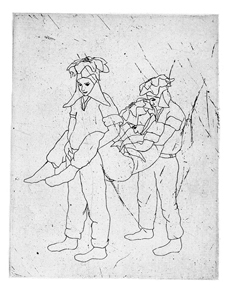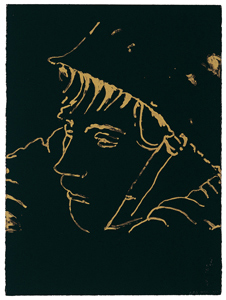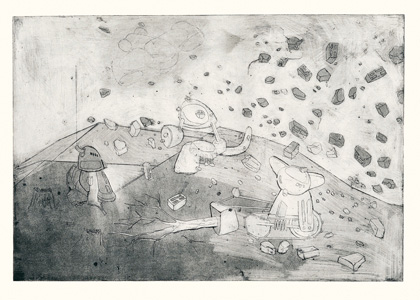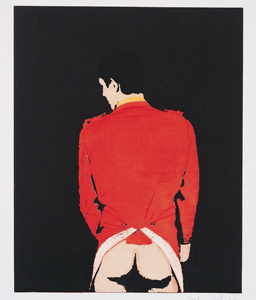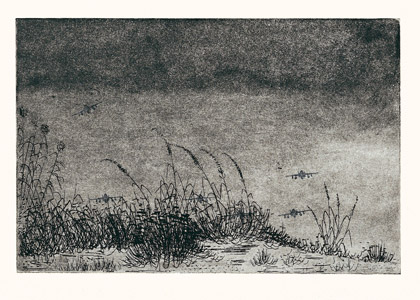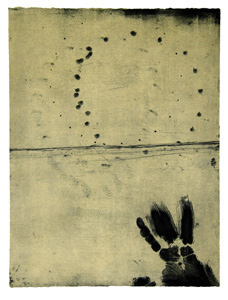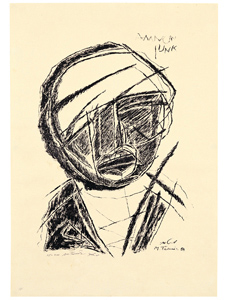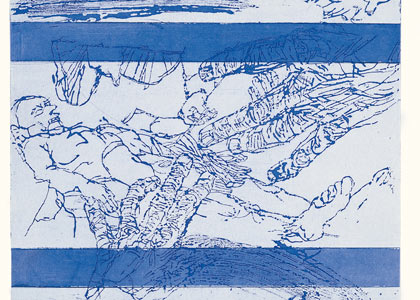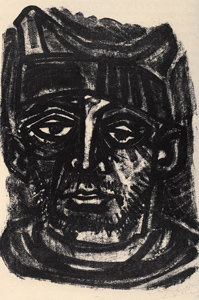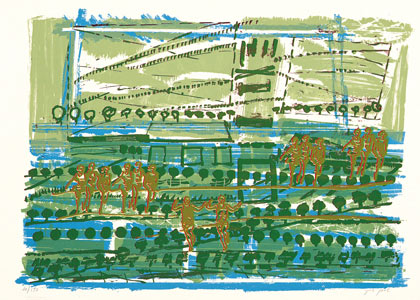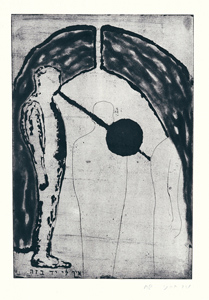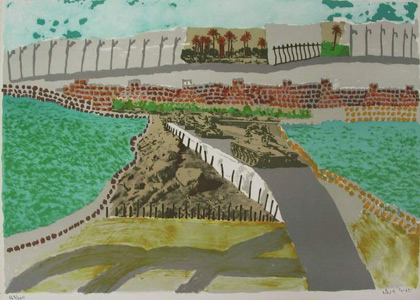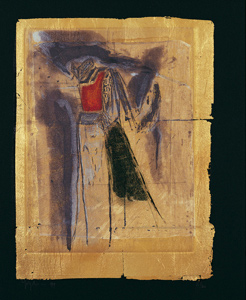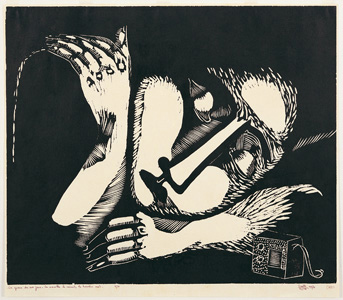Etchings & Scratches
Curator: Sigal Barkai
07/03/2008 -
21/10/2008
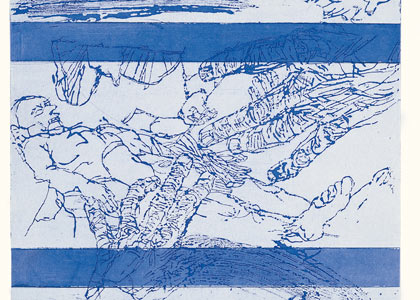
Etchings, Scratches and Scars- Changing Representations of the Israeli Soldier
The exhibition explores the connection between artistic printmaking and the representation of soldiers and warfare in Israel. It includes prints from the collection of the Petach Tikva Museum of Art, along with prints by contemporary artists, most of which were created especially for this exhibition. The decision to focus this exhibition on print work arises from the desire to explore a subject, which was usually treated on a grand scale employing official “state” vocabularies, through an alternate mode, featuring products of an artistic process that is more introverted and humble, that grapples with techniques and media that are not readily pliable or compliant. Etching plates are limited in size, which is dictated by the size of the printing press; the acids that eat into the surface of the plate demand a work rhythm that is sensitive and attentive to exacting organic processes; the results of these complex processes do not require large exhibition spaces. The reduction into both the small format of print work and its monochrome schemes enable the artists to refine a personal statement while excavating deeper strata, but also allow space for critical expression to emerge, without these expressions taking on the form of blatant propagandistic declarations. Even harsh claims are transformed by print work into an intimate, interiorized, and understated protest.
The curatorial action taken was to invite the artists into the museum’s storerooms and to take stock of the collection works kept there – in order to precipitate an initial encounter between the images of soldiers contained in the collection and the thoughts, feelings, and emotions of the contemporary artists. The process of exposure to the old collection resulted in a new series of prints, produced in collaboration with the Jerusalem Print Workshop and the Gottesman Etching Center at Kibbutz Cabri. The artists’ response to this initiated encounter entailed no direct commitment to the forms and images found in the museum’s collection. To the series that resulted from this process older works were added.
Different voices were invited to participate in the exhibition, representing a variety of viewpoints on the image of the soldier, reinforces the understanding that there is no escape from coping with this figure as constitutive of identity. The focus on the soldier’s body as a symbolic signifier of the national mood has for the most part yielded mainly images of destruction, injury and disintegration. Erez Israeli and Elad Kopler beg for an hiatus in which to mature, before they are required to go out and take part in the game of masculinity. They are crying out for their standpoint to be heard and understood: a Peter Pan plea of a child who is not ready to grow up yet. Aya Ben Ron and Dina Shenhav focus on the protective, motherly position, viewing the wounded and exhausted soldier as a vulnerable flower/child. Moshe Gershuni’s work also evokes feeling of fatigue, disintegration and tragedy in this context. This climate characterizes large segments of Jewish-Israeli society in 2008 as well as the social reality to which these groups have given rise — a climate evidenced, above all, in the rage and bitterness about the loss of soldiers’ lives during the last war. It appears as though there is no longer popular legitimacy for sending soldiers into the battlefield, no wars are unanimously defined as “just” anymore.
The artists’ helplessness in light of the uncontrollable aspect of the conflict leads them into various avenues of escape: whether escape in time, to other historical and cultural eras, as in the work of Sharon Poliakine, or through escape by evasion, erasure, and repression (Vered Heruti), or by escaping into virtual or fictive-cinematic fantasy (Elad Kopler and Yigal Ozeri).
As opposed to the gaze of the Jewish artist, that underscores the soldier’s existence as a vulnerable, hurting and sensitive person, the Arab artist views him as an icon of the political regime, of power and hegemony. The static societal position of Israeli Arabs from the time of the state’s establishment and until the present is reflected in Abu Shakra’s position, which sees the Israeli soldier as the representative of an excluding and arrogant world-view. Whereas the underlying premises of the artworks represented in the museum’s collection, such as those by Scheinfeld, Shemuel Katz and Moshe Tamir involve an almost complete obliviousness to the Arab point of view, in numerous arts exhibitions of the recent years (this exhibition included), a certain cultural space has opened up, that permits the Arab-Palestinian position to emerge and be voiced.
The current exhibition of prints from different time periods produces a view that is at once panoramic and multi-perspectival. This view posits that we are all victims of the conflict: the excluded and shunned Arab, the woman whose child is snatched away from her too early to be drafted, and the soldier whose body, soul, and self are appropriated by an external force, dictated by affairs of state. As artists, each of the participants in the exhibition represents his or her personal sense of victimhood. What has changed radically in the works along the time axis is the ability to recognize the multiplicity and diversity of narratives, and the fact that each side to the conflict assumes the right to speak of its own injuries, to express a multi-faceted identity: gendered, national, and human.

